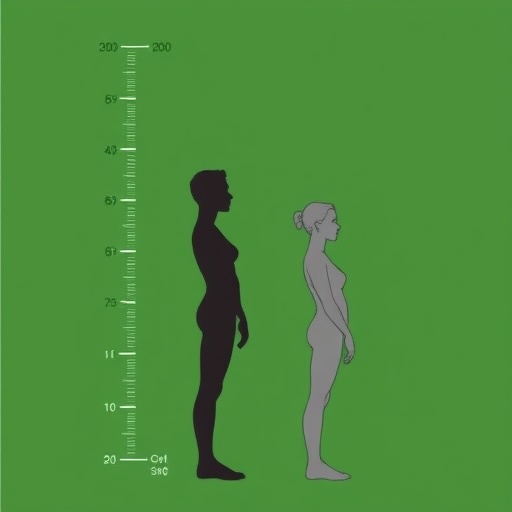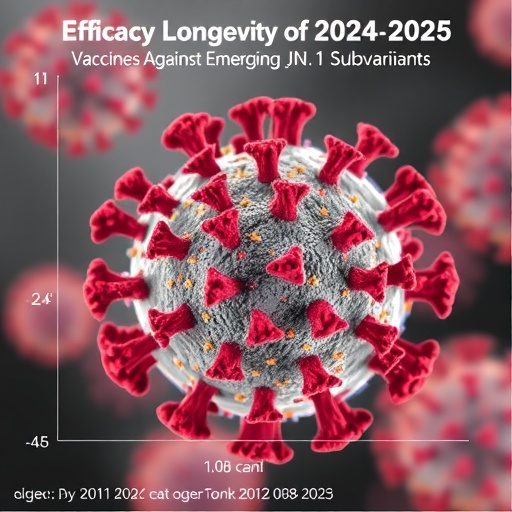In the ever-evolving landscape of forensic anthropology and legal medicine, precise and reliable methods for estimating human stature play a crucial role in both criminal investigations and historical research. A recent correction published by Bidmos and Brits in the International Journal of Legal Medicine (2025) revisits the comparative accuracy of population-specific versus generic regression equations used to estimate stature from skeletal remains within a South African context. This correction not only addresses the nuances in their prior work but reinvigorates the broader scientific conversation surrounding the applicability and limitations of regression models in diverse populations.
Estimating the stature of individuals from skeletal remains is foundational in forensic identification processes. It allows practitioners to narrow down potential matches and offers insights into biological profiles when other identifying information is unavailable. Traditional approaches often employ generic regression equations, developed primarily from large, mixed-population datasets, that aim to provide broad applicability. However, the criticism of such generic formulas has long been that they potentially oversimplify population-specific anatomical variations, leading to significant errors in stature estimation, especially in genetically or environmentally distinct groups.
In their work—and subsequent correction—Bidmos and Brits emphasize the importance of tailoring regression models to the population in question. The unique genetic heritage, environmental influences, and lifestyle factors characteristic of South African groups necessitate a nuanced understanding of skeletal dimensions. The distinct morphological features observed in these populations may not be adequately captured by generic formulas derived from predominantly European or North American populations. Hence, refining these models to incorporate population-specific data can substantially improve accuracy.
The corrected analysis presented addresses certain statistical and methodological oversights in the original publication, thereby enhancing the reliability of their conclusions. One major point of consideration lies in the quality and breadth of the sample data, a perennial challenge in forensic research. Ensuring representative samples that accurately reflect the demographic diversity within South Africa is essential for generating robust regression equations. Such rigor helps minimize biases that can otherwise propagate estimation errors.
From a technical perspective, the crux of stature estimation rests on measuring long bones—such as the femur, tibia, and humerus—and applying linear regression equations that translate these skeletal lengths into an estimated living height. The integrity of these measurements, alongside the statistical soundness of the regression models, dictates the accuracy of the outcome. The correction clarifies some numerical inconsistencies and recalibrates coefficients to reflect a better fit for the South African skeletal data, thereby advancing forensic methodologies in the region.
One of the more compelling facets of this work is its implications for the forensic community at large. While the benefits of developing population-specific stature estimation models are clear, the practical application in diverse and often mixed ancestry populations presents logistical challenges. The correction encourages forensic practitioners to exercise caution when applying generic equations to admixed or populations without validated models, underscoring the risk of potentially misidentifying individuals.
Moreover, the research spotlights the role of genetic admixture and its effect on skeletal morphology. South Africa’s rich tapestry of populations—comprising indigenous groups, colonial descendants, and contemporary immigrants—creates a complex biological milieu. This complexity demands that forensic models adapt to these variations, moving beyond one-size-fits-all formulas to embrace more sophisticated, data-driven approaches.
The correction also touches upon advances in computational modeling and machine learning as emerging tools poised to revolutionize stature estimation. Unlike traditional linear regressions, modern algorithms can process multidimensional data sets, integrating numerous skeletal measurements to produce more accurate predictions. Integrating such approaches with population-specific datasets could redefine forensic anthropological practices, making stature estimation faster, more accurate, and more adaptable to various populations.
Another notable technical discussion reflects on the importance of cross-validation in developing regression tools. The corrected analysis underscores that the predictive power of any such equation must be rigorously tested across independent datasets to confirm its generalizability. This practice ensures that forensic conclusions drawn from regression models stand on solid statistical ground, which ultimately bolsters judicial confidence in forensic evidence.
In addition to forensic applications, the findings have anthropological significance. Understanding the nuances of stature variation illuminates broader questions about human adaptation, health, and evolution within specific environments. The corrected information invites further interdisciplinary research connecting skeletal biology, genetics, and environmental sciences to unravel how these factors shape human morphology over time.
Importantly, the correction by Bidmos and Brits does not diminish the value of generic regression equations; rather, it reframes them as baseline tools. Generic models retain utility, especially in contexts where population-specific data is lacking or unavailable. However, whenever feasible, these should be supplemented or replaced by empirically validated, population-adjusted models to avoid systematic biases.
The dissemination of this correction has also sparked a wider conversation in the scientific community about transparency and accuracy in forensic research publication. It exemplifies the imperative for ongoing scrutiny and willingness to amend prior findings when new data or analyses reveal inconsistencies. Such openness strengthens the field and encourages continuous methodological refinement.
This reevaluation also carries ethical considerations. Accurate identification in forensic cases is not merely a technical goal but a societal imperative—bringing closure to families, aiding justice, and upholding human dignity. The correction ensures that forensic methods do not inadvertently perpetuate inaccuracies that could have profound legal and social consequences.
Furthermore, the research highlights the logistical challenges in collecting population-specific data, including ethical consent, demographic representation, and access to skeletal remains. Addressing these challenges requires collaborative efforts between researchers, local communities, and legal authorities to build comprehensive, ethically sound reference databases.
In summary, the correction to Bidmos and Brits’ evaluation of stature estimation regression equations underscores the intricate balance between generic applicability and population specificity in forensic anthropology. It shines a spotlight on the necessity for ongoing research that embraces the biological diversity of human populations and leverages technological advancements to refine predictive models. As forensic science continues to integrate interdisciplinary insights, the calibration of such models will remain essential for achieving precise and just outcomes.
With the publication of this correction, Bidmos and Brits contribute significantly to setting new standards for forensic stature estimation within South Africa and beyond. Their work catalyzes both academic inquiry and practical improvements, reinforcing the critical role of tailored scientific approaches in addressing complex biological and legal challenges. This study serves as a testament to the evolving nature of forensic methodologies, driven by rigorous analysis and a commitment to scientific integrity.
Subject of Research:
Accuracy of population-specific versus generic stature estimation regression equations in forensic anthropology.
Article Title:
Correction to: Evaluating the accuracy of population-specific versus generic stature estimation regression equations in a South African sample.
Article References:
Bidmos, M., Brits, D. Correction to: Evaluating the accuracy of population-specific versus generic stature estimation regression equations in a South African sample. Int J Legal Med (2025). https://doi.org/10.1007/s00414-025-03642-8
Image Credits: AI Generated
Tags: accuracy of stature estimation techniquesanatomical variations in diverse populationsBidmos and Brits stature researchbiological profiling in forensic investigationscorrection in forensic research methodologyforensic identification processes in South Africalimitations of generic stature equationsskeletal remains analysis in legal medicineSouth African population-specific regression equationsstature estimation methods in forensic anthropologytailoring regression models for ethnic groups




